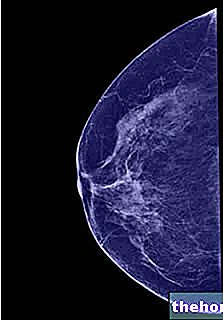The intramural fibroid
Among the uterine myomas the intramural fibroid stands out, a benign tumor that develops around the uterine wall, causing a change in the structure and volume of the uterus. More precisely, while the subserosal fibroid affects the outer wall of the uterus, the intramural myoma grows in thickness of the wall itself; it is therefore defined as "intramural" precisely because its location is intraparietal.
Incidence
Generally, women of childbearing age are the "preferred" targets for intramural fibroids. This category of tumors tends to remain a benign form: only in rare cases, intramural fibroids degenerate into cancer (malignancy).
Structure
Intramural fibroids can be very small in size, but they can also undergo substantial enlargement: in the latter case, the gynecologist could consider the possibility of subjecting the patient to surgical excision of the tumor.
Symptoms
Most of the time, intramural fibroids are asymptomatic and as such do not involve symptoms in women: not surprisingly, many fibroids are diagnosed randomly, during a normal check-up visit.
On the other hand, when the intramural fibroid implies consequences, the woman could complain of metrorrhagia (unexpected and painful bleeding in the intra-menstrual period), as well as polymenorrhea associated with anemia and abdominal pain. Metrorrhagia is a frequent occurrence if the intramural tumor causes ulceration. Statistics have found that most women with intramural fibroid also complain of constipation, abdominal pain and pain during intercourse (dyspareunia).
This type of benign tumors could cause abnormal contractions at the time of delivery; in some women, the presence of an intramural fibroid during pregnancy has favored the premature birth of the baby, due to the continuous contractions to which the uterus is subjected.
In some women with intramural fibroid there was a difficulty in getting pregnant and a higher probability of spontaneous abortions; in some rare cases, the woman may experience symptoms of infertility (unable to carry the pregnancy to term). It should be emphasized that "infertility" is not synonymous with "sterility": a sterile woman is unable to conceive, while in "infertility the woman manages to get pregnant, but is unable to bring the pregnancy to a successful end."
Treatment
For the resolution of the intramural fibroid, the gynecologist can surgically remove the tumor, or advise to undergo embolization or thermal ablation (destruction of the tumor by heat). In mild cases, the doctor prescribes a hormone-based drug treatment to the patient. .
Summary
Illness
Intramural fibroma
Description
Benign tumor that develops in the outer wall of the uterus
Incidence
Women of childbearing age
Diagnosis
Intramural tumors are often diagnosed randomly
Symptomatology
Often times, intramural fibroids are asymptomatic; if the extension is substantial, they could cause abdominal pain, bleeding, polymenorrhea, anemia, ulceration
Rare cases
Infertility, pre-term birth, miscarriages
Therapies that eliminate intramural fibroid
Surgery, embolization, thermal ablation, hormonal drug treatment



.jpg)


















-nelle-carni-di-maiale.jpg)




